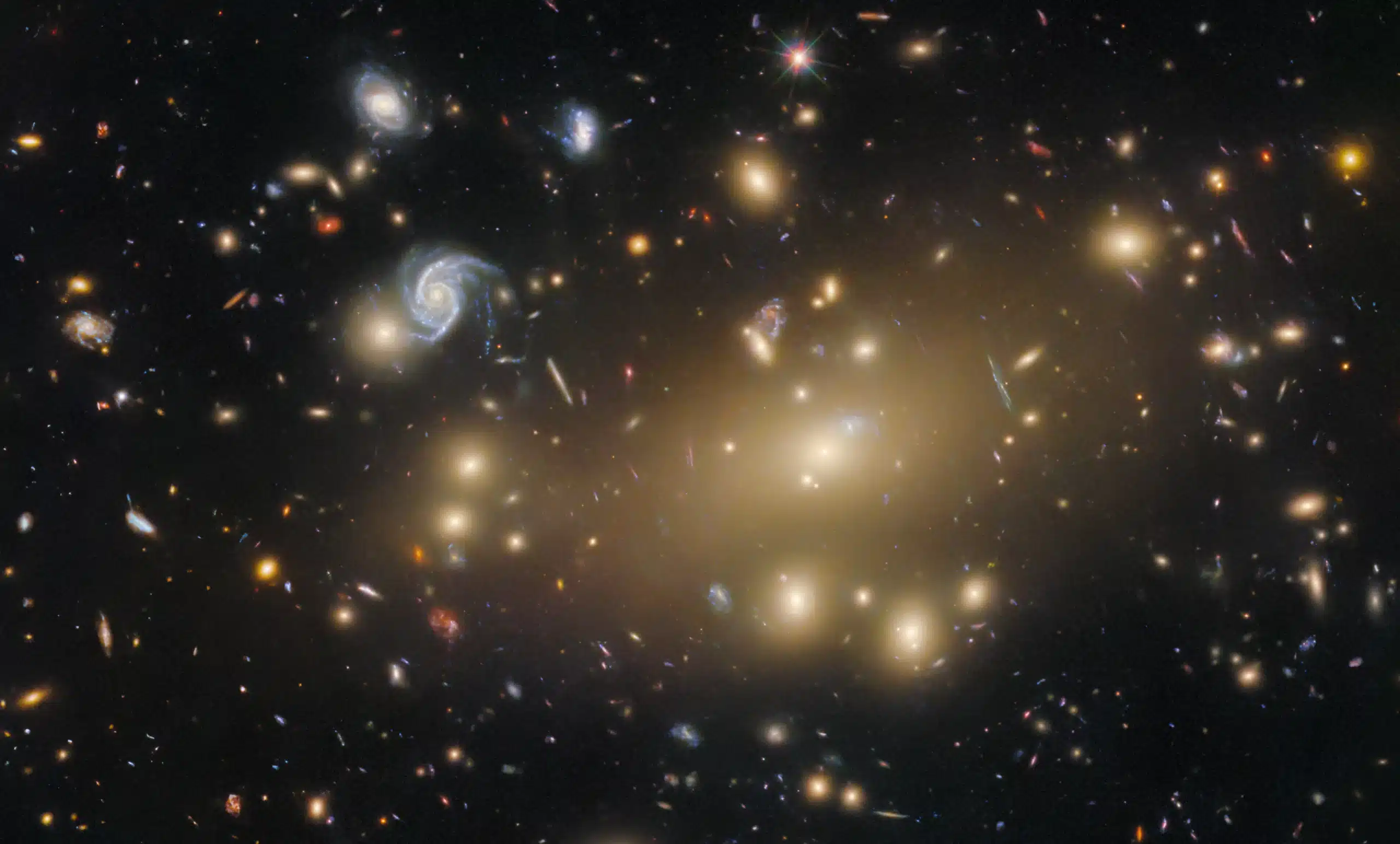Hubble Reveals Dark Matter Structure in Abell 209 Galaxy

NASA and the European Space Agency’s Hubble Space Telescope have unveiled a breathtaking image of the galaxy cluster Abell 209, located 2.8 billion light-years away in the Cetus constellation. This massive cluster, which houses over 100 galaxies, reveals not only its luminous members but also an intricate network of invisible structures, including hot gas and dark matter. These unseen components play a crucial role in shaping the universe through their gravitational influence, and Hubble’s advanced technology allows scientists to explore these elements and the warped spacetime they create.
Technological Advancements in Imaging
The stunning new image of Abell 209 was captured using Hubble’s Advanced Camera for Surveys (ACS) and Wide Field Camera 3 (WFC3). To create this comprehensive view, twelve exposures were taken through various color filters and then combined. The resulting image showcases a golden hue emanating from numerous bright elliptical galaxies clustered at the center, complemented by a few blue spiral galaxies at the periphery. Hubble’s ability to eliminate the blurriness caused by Earth’s atmosphere ensures that distant galaxies appear sharply defined. In visible light, the largest galaxies present themselves as smooth golden orbs, while the spiral galaxies exhibit a subtle blue glow. This remarkable achievement highlights Hubble’s technological prowess in merging optical and infrared data into a single, captivating cosmic portrait.
Insights into Dark Matter and Dark Energy
According to Hubble scientists, images like this one are vital for addressing fundamental questions regarding dark matter and dark energy. The space surrounding the galaxies in Abell 209 is filled with X-ray-hot gas and is predominantly influenced by dark matter. In fact, only about 5% of the universe consists of ordinary matter, while approximately 25% is dark matter and 70% is dark energy. The massive cluster acts as a natural lens, slightly distorting the light from more distant galaxies. In the Hubble image, some faint background galaxies appear elongated into curved streaks. By analyzing these distortions, scientists can map the total mass of the cluster, including its dark matter content. This process allows researchers to test theories about the universe’s expansion under the influence of dark matter and dark energy.
The Importance of Hubble’s Discoveries
The discoveries made by Hubble are crucial for our understanding of the cosmos. By studying galaxy clusters like Abell 209, scientists can gain insights into the fundamental components of the universe. The interplay between visible matter, dark matter, and dark energy remains one of the most significant challenges in modern astrophysics. Hubble’s ability to capture detailed images of these distant clusters not only enhances our knowledge of their structure but also provides a window into the underlying forces that govern the universe. As researchers continue to analyze this data, they hope to unravel the mysteries surrounding dark matter and dark energy, ultimately leading to a deeper understanding of the cosmos and its evolution.
Observer Voice is the one stop site for National, International news, Sports, Editor’s Choice, Art/culture contents, Quotes and much more. We also cover historical contents. Historical contents includes World History, Indian History, and what happened today. The website also covers Entertainment across the India and World.

